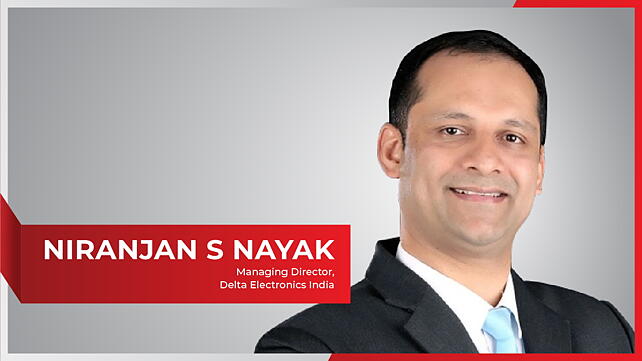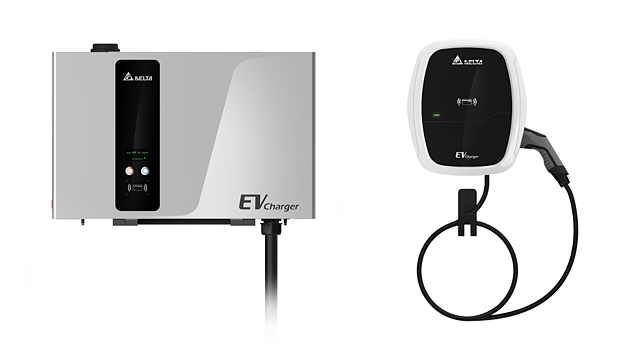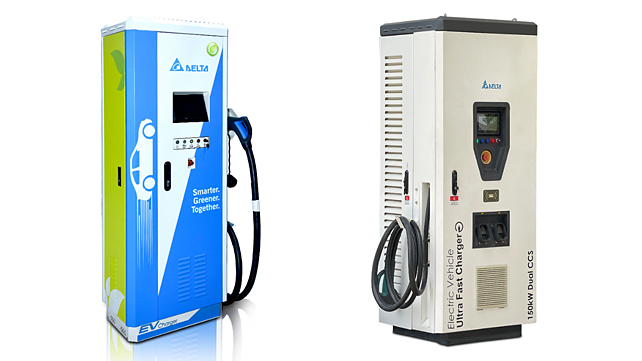
As the Managing Director of Delta Electronics India, Niranjan S Nayak has identified areas with significant market potential and has drawn up clear strategy for product development, thus enhancing the company’s presence in this new segment. A professional with over 24 years of experience in the field of power electronics, Nayak had joined Delta Electronics India in 2004. Through his professional career, he has worked with various industries and businesses like telecom, renewable energy, networking, IT, power, automotive, and lighting. His career has been marked by a series of challenging positions of management responsibility.
From an e-mobility perspective, what are the kind of opportunities you see in the Indian market, both in the current context as well as the future?
We saw a very good push in terms of e-mobility around 2017-18, but there has been a slowdown in between because of COVID and other unfortunate incidents. Every industry, when it starts off, goes through some kind of confusion or lack of stability, and that is what we saw in the last few years. I feel this industry is shifting gears now.
In addition to growing vehicle sales, there is also a requirement to build charging infrastructure. It wasn’t very aggressive in 2020-21, but this year we have seen various tenders coming up. Apart from that, we can already see that a good number of the charge point operators (CPO) – both large and small – have started deploying infrastructure all across the major cities, and are now considering going into smaller cities.
Even OEMs are trying to support by providing a small charger with their e-vehicles. At the same time, they're also trying to work with different organisations to set up the charging infrastructure. Moreover, battery swapping stations have also picked up pace.
From a tech perspective, is there merit in thinking that a market like India needs a standardised charging solution, or you think because of the diversity, India would have different charging solutions?
Both approaches will work, as they have both worked even globally. The idea is to go with the best solution because every vehicle is not going to come with a standardised solution in future. Standardising will surely offer convenience to customers, as there will be a kind of uniformity that he will be able to see. At the same time, we have to go with the industry trends. Over a period of time, there could be a possibility where the industry, or even the government, can look at creating a standard – if not 100%, but bring uniformity to some extent.
From Delta's global experience across North America, Europe and Asia, what are some of the critical learnings that you can bring into India?
There are two areas that I could talk about. One is reliability & quality from a safety perspective. As of now, the demand for safety globally is quite high. It's not that there is no demand for safety in India. But sometimes when it is rolled out in India, there is a lack of safety awareness, which we try to bring into our installations. From the global perspective, when it comes to product development and installation, we have the highest safety standard to ensure we avoid any potential challenges in the future.
Secondly, in my discussions with our customers – suppliers and large CPOs – I always say we have to make sure that our chargers gel with urban planning in terms of look & feel, as well as proper installation. Globally, we ensure this by undertaking detailed planning.

Considering India is a value conscious country, has cost been a barrier in introducing quality products to the market?
Not at all. In the 20 years of Delta being in India, we have never compromised on quality. We have been the leaders in all sectors – be it telecom or power. If we compromise on quality because we need to drop the price, that will pinch or pain us later – both in terms of operation & maintenance and future costs.
In India, the customer accepts good quality products at a reasonable price. When we have a global product, we may not be able to introduce it directly here because the requirement in terms of features could be quite high globally, considering they are talking about IoT and V2X connectivity.
Such features might not be required at this point of time in India. We design the specifications just right for India.
You mentioned IoT and V2X connectivity. From a charging perspective, how do you see the role of electronics evolving?
The role of electronics is going to improve for the various standards. At the same time, we are also trying to use advanced technology such as IGBTs (Insulated Gate Bipolar Transistor) or other components available globally, so that this can help us to create a hardware platform and later, the software could be upgraded into the hardware.
So, even if we have to develop a new firmware or platform, and have to upload that into our system over a period of time – be it IoT or other features – it is possible because we have the flexibility designed into the system. At Delta, we keep the basic platform same, and value additions can be done over a period of time based on the need of the customer.
What is the kind of work happening in the India R&D centre, and what role is the centre playing for Delta global?
Delta has R&D centres globally, and spends almost 7% of its annual revenue on R&D activities. In India, we started the R&D centre almost 12-13 years ago to support our products for telecom power systems or UPS and display solutions. Later, the management globally realised that there is a good amount of talent available in India for both hardware and software. That’s when we started collaborating with our global R&D centres to support various projects in India.
Today, the R&D centre caters to all kind of power management solutions in India, be it low-power or medium power. We also have R&D for the industrial automation software segment, and we have very strong R&D for EV across various segments. This includes various power modules and onboard chargers that we develop in India, both hardware and software, in collaboration with our German and US R&D centres.
Additionally, we have the charging infrastructure R&D in India, where we develop for the local market, and also collaborate with the global R&D to support their global requirement. We have about 350 R&D engineers in India currently, and we continue to grow quite fast, both for hardware and software.

Considering the growth that you foresee in the Indian market, what are your expansion plans and what's the kind of investments you have lined up?
Whatever we need to supply in India, we try to manufacture them in India. More than 60% of our supplies in India are manufactured locally. Later, we also started supporting Government of India’s “Atmanirbhar Bharat’ initiative, and as a part of it in 2015-16, we committed to set up a large operation in Krishnagiri, Karnataka – both for expanding our local production, as well as to support global production.
We have already acquired a large piece of land, where the factory is being built. This factory is going to support all kind of products starting from EV chargers or power supplies, components, telecom power supplies, data centre solutions, and industrial automation products.
You are already collaborating with a lot of EV ecosystem players in India. How do you see this growing?
With OEMs, we try to collaborate on a long-term basis, by understanding their requirements – both for charging and onboard chargers. They may have certain requirement in terms of the design, specification or the look & feel. This is where we will try to work with them as an ODM (Original Design Manufacturer) partner or a partner who's going to design a product for them that could suit their requirement. This is a long-term approach.
On the other hand, the government segment is tender-based. We have to work based on the requirement, what they specify, supply and maintain. It's certainly going to be long-term in terms of maintaining the chargers or the ecosystem, but at the same time, the specifications are going to be more standard compared to the market. This is more transactional, but can be maintained for a long-term.
The third segment comprises of the charge point operators (CPO). In this case, most of the time, the product is standard but you also have to add certain features to attract customers. With CPOs, serviceability and long-term reliability is more important. Again, this could be a mid- to long-term kind of a partnership.
Delta will have to be flexible in terms of understanding which segment we are trying to participate, and try to design a kind of business model or collaboration with them to make sure that we are able to deliver and meet their expectation on a long-term.
When we look at the India promise, as far as e-mobility is concerned, what could be Delta India’s contribution to Delta globally?
If you look at the overall contribution in terms of number of chargers that we are installing in India versus global, India is probably less than 5% today. In comparison, the number of chargers we sell in the US, Europe and some other markets is quite high.
However, as the electric two- and three-wheeler segment picks up steam in India – Delta will be participating in its growth. This is a unique segment, where Delta will be participating primarily in India. Of course, there are other countries like The Netherlands, where we are present in the two-wheeler segment as well. In comparison though, the opportunity in the two- and three-wheelers segment in India, is very high.
Once the other segments, such as the electric four-wheeler or e-bus, pick up speed, we should be able to contribute around 20-22% of charger shipments by 2025 from India for Delta global.
Also read:
Delta Joins Webasto, Develops Thermal Management Solution For Roof Sensor Modules